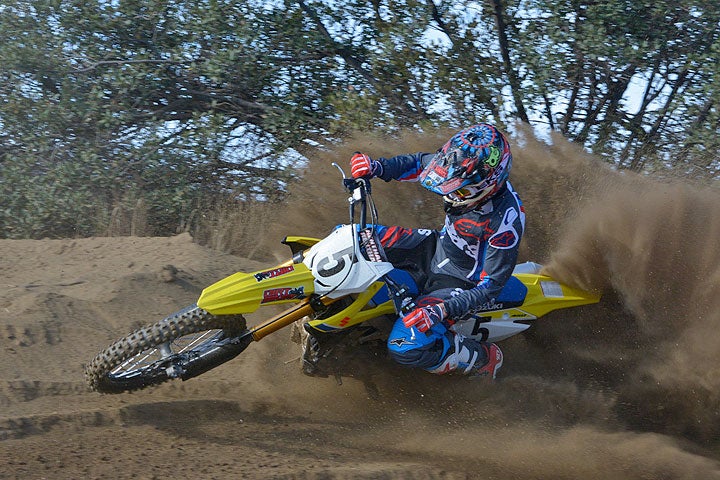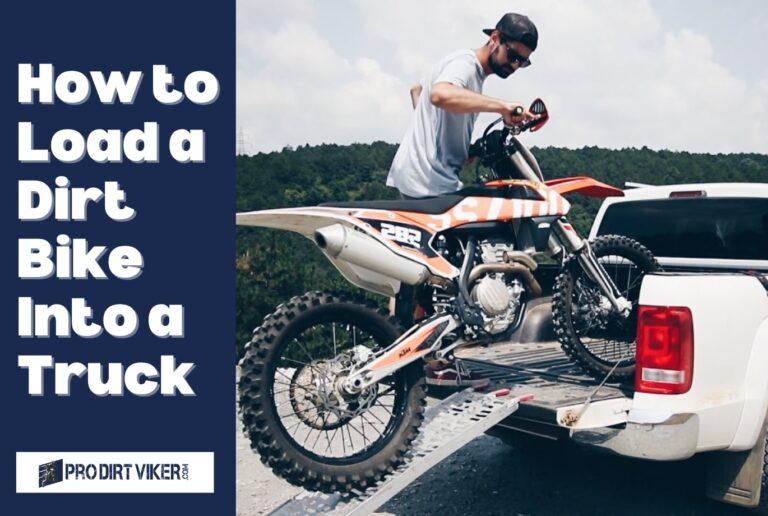Dirt Bike Tire Size Meaning: Understanding the Numbers
Dirt bike tire sizes are typically displayed on the sidewall of the tire as a series of numbers separated by a slash mark (/) and a dash (-). These numbers indicate the width of the tire from the sidewall in millimeters, the sidewall height as a percentage of the tire’s width, and the inner diameter of the tire in inches.
Understanding these numbers is essential for choosing the right tire for your dirt bike. When it comes to choosing the right tire for your dirt bike, understanding tire sizes is crucial. Dirt bike tire sizes are typically displayed on the sidewall of the tire as a series of numbers separated by a slash mark (/) and a dash (-).
These numbers represent the width of the tire, the sidewall height, and the inner diameter in millimeters and inches, respectively. By deciphering these numbers, you can ensure that you choose the right tire for your bike’s specific needs and performance requirements. We will break down the meaning of dirt bike tire sizes and provide you with the information you need to make an informed decision.
What Do The Numbers On Dirt Bike Tires Mean?
Width of the tire from the sidewall (in millimeters)
When it comes to understanding dirt bike tire sizes, the numbers on the sidewall play a crucial role in providing valuable information. The first number represents the width of the tire from the sidewall, measured in millimeters. This measurement plays a significant role in determining the overall size and performance of the tire.Sidewall height or aspect ratio as a percentage of the tire’s width
The second number, which is represented as a percentage, indicates the sidewall height or aspect ratio of the tire. This means it represents the height of the tire’s sidewall as a percentage of its width. It’s important to consider this aspect ratio as it can affect the handling, stability, and overall ride quality of the dirt bike.Inner diameter of the tire in inches
The last number in the series represents the inner diameter of the tire, typically measured in inches. This measurement refers to the size of the rim that the tire is intended to fit. It is crucial to ensure that the tire’s inner diameter matches the rim size of the dirt bike to ensure a proper fit and safe riding experience. Now that we understand what the numbers on dirt bike tires mean, let’s dive deeper into how to read and interpret these tire sizes accurately.
Credit: www.dirtbikes.com
Why Is Understanding Dirt Bike Tire Sizes Important?
Understanding dirt bike tire sizes is crucial for any rider who wants to optimize performance, ensure safety, and choose the right tire for their riding style. With the right tire size, you can achieve optimal performance and handling, have better safety on different terrains, and match the tire to your specific riding style. Let’s explore each aspect in more detail:
Optimal Performance and Handling
Choosing the right tire size for your dirt bike is essential for achieving optimal performance and handling. The tire size affects the bike’s contact patch with the ground, which in turn impacts traction and stability. A tire that is too narrow may lack traction, while a tire that is too wide may compromise maneuverability. By understanding tire sizes, you can select the dimensions that align with your bike’s specifications and enhance its overall performance.
Safety on Different Terrains
Different terrains require different tire sizes to ensure safety and control. For example, if you ride primarily on soft, muddy terrain, a wider tire with deep, aggressive tread patterns can provide better traction and prevent your bike from getting stuck. On the other hand, if you frequently navigate tight trails or rocky surfaces, narrower tires with more closely spaced knobs can provide better maneuverability and grip. Knowing the appropriate tire size for each terrain type can significantly enhance your safety and enjoyment while riding.
Choosing the Right Tire for Your Riding Style
Every rider has a unique riding style, whether it’s aggressive motocross racing, casual trail riding, or long-distance endurance riding. Understanding tire sizes allows you to choose a tire that matches your riding style and preferences. For example, if you enjoy aggressive cornering and high-speed riding, you might prefer wider tires with a larger contact patch for better stability and grip. Conversely, if you prefer nimble handling and quick acceleration, narrower tires with lighter construction can provide the desired responsiveness. By selecting the right tire size for your riding style, you can enhance your overall riding experience.
In conclusion, understanding dirt bike tire sizes is essential for achieving optimal performance and handling, ensuring safety on different terrains, and choosing the right tire for your riding style. By familiarizing yourself with tire size meaning, you can make informed decisions when it comes to selecting the perfect tire for your dirt bike. So take the time to research and understand tire sizes, and unlock the full potential of your off-road adventures.
The Components Of Dirt Bike Tire Size
Understanding the components of dirt bike tire size is essential for riders who want to optimize their performance on different terrains. By comprehending the significance of each aspect, such as tire width, sidewall height, and inner diameter, riders can make informed decisions when selecting the right tire for their bike.
Tire Width and its Impact on Traction
The width of a dirt bike tire is measured from the sidewall and is indicated in millimeters. It plays a crucial role in determining the contact area between the tire and the ground. Wider tires provide increased traction, which is advantageous for riding on loose or muddy surfaces. On the other hand, narrower tires are better suited for hard-packed or rocky terrains, as they offer better stability and maneuverability. It is important to select a tire width that matches your riding style and the type of terrain you frequently encounter.
Sidewall Height and its Effect on Ride Comfort
The sidewall height of a dirt bike tire refers to the aspect ratio, expressed as a percentage of the tire’s width. It influences two key factors: ride comfort and sidewall flex. Tires with a higher sidewall height provide a more comfortable ride by absorbing shocks and reducing vibrations. However, they may have less precise handling characteristics compared to tires with a lower sidewall height. Riders who prioritize comfort and want a smoother off-road experience should opt for tires with a higher sidewall height. Those seeking more responsive handling and better feedback from the terrain may prefer tires with a lower sidewall height.
Inner Diameter and Compatibility with Bike Rims
The inner diameter of a dirt bike tire represents the size of the rim it will fit. It is measured in inches and is crucial for ensuring compatibility with the bike’s rims. The inner diameter determines how tightly the tire fits onto the rim and affects its stability and performance. Choosing the correct inner diameter size is crucial for maintaining proper tire pressure and avoiding tire slippage during intense riding activities. It is essential to refer to the manufacturer’s guidelines or consult with a professional to determine the appropriate inner diameter for your dirt bike’s rims.
In summary, the components of dirt bike tire size include tire width, sidewall height, and inner diameter. Each aspect has a specific impact on traction, ride comfort, and compatibility with bike rims. By understanding these factors, riders can make educated decisions when selecting the most suitable tires for their dirt bikes.
How To Read Dirt Bike Tire Sizes?
Decoding the numbers on the tire
When it comes to understanding dirt bike tire sizes, it is essential to decode the numbers engraved on the sidewall of the tire. These numbers provide crucial information about the tire’s dimensions and characteristics. Let’s break down the tire size code step by step to ensure you can interpret it accurately.Interpreting each component to understand the tire’s characteristics
To read dirt bike tire sizes correctly, you need to interpret the various components of the code. Here is a breakdown of what each number represents: 1. Tire Width: The first number in the code indicates the width of the tire from sidewall to sidewall, measured in millimeters. For example, if the number is 80, it means the tire width is 80 millimeters. 2. Aspect Ratio: The second number represents the aspect ratio or sidewall height as a percentage of the tire’s width. For instance, if the number is 80, the tire’s height is 80% of the tire’s width. 3. Inner Diameter: The last number represents the inner diameter of the tire measured in inches. This measurement determines the size of the wheel the tire can fit onto. By understanding these three components, you can decipher the tire’s characteristics and compatibility with your dirt bike.Examples and illustrations of various tire size codes
Let’s look at some examples of dirt bike tire size codes to illustrate how they are presented and interpreted:| Tire Size Code | Interpretation |
|---|---|
| 80/100-21 | The tire has a width of 80mm, an aspect ratio of 100%, and fits a 21-inch wheel. |
| 110/90-19 | The tire has a width of 110mm, an aspect ratio of 90%, and fits a 19-inch wheel. |
| 90/100-16 | The tire has a width of 90mm, an aspect ratio of 100%, and fits a 16-inch wheel. |
Common Dirt Bike Tire Size Terminology
When it comes to dirt bike tires, understanding the terminology associated with tire sizes is crucial. This knowledge will help you select the right tire for your bike and improve your overall riding experience. In this section, we will delve into the common dirt bike tire size terminology, including aspect ratio, rim diameter, load rating, and speed rating.
Aspect Ratio
The aspect ratio of a dirt bike tire is a numerical value that represents the sidewall height of the tire as a percentage of the tire’s width. It is typically expressed as a two-digit number followed by the letter “R” (e.g., 90R). The aspect ratio plays a crucial role in determining the tire’s performance characteristics, such as stability and handling. A lower aspect ratio indicates a shorter sidewall, which results in better cornering ability and responsiveness, while a higher aspect ratio provides a smoother ride and improved traction on uneven terrains.
Rim Diameter
The rim diameter refers to the size of the wheel onto which the tire is mounted. It is measured in inches and is typically indicated by a three-digit number followed by the letter “R” (e.g., 21R). The rim diameter directly affects the tire’s fitment and compatibility with a specific bike model. It is essential to choose a tire with the correct rim diameter to ensure optimal performance and safety.
Load Rating
The load rating of a dirt bike tire determines its maximum weight-carrying capacity. It is indicated by a numerical value, with higher numbers representing higher load-carrying capacities. The load rating is crucial, especially if you regularly carry heavy gear or participate in off-road adventures that require additional equipment. Choosing a tire with an appropriate load rating will ensure that the tire can handle the necessary weight without compromising performance or safety.
Speed Rating
The speed rating of a dirt bike tire indicates the maximum speed at which the tire can safely operate. It is denoted by a letter, with each letter representing a specific speed range. The speed rating should align with your riding style and the terrain you typically ride on. Selecting a tire with a higher speed rating than necessary is unnecessary and may result in reduced performance or reliability.
In conclusion, understanding the common dirt bike tire size terminology is essential for selecting the right tire for your bike. By familiarizing yourself with the aspect ratio, rim diameter, load rating, and speed rating, you can make informed choices that enhance your riding experience and keep you safe on the trails. Remember to consult your bike’s manual or a professional if you are unsure about which tire sizes are suitable for your specific dirt bike model.
Factors To Consider When Choosing Dirt Bike Tire Sizes
When it comes to selecting the right tire size for your dirt bike, there are several important factors to consider. Not only does the tire size affect your bike’s performance, but it can also impact your overall riding experience. By taking certain aspects into account, you can ensure that your tires are suitable for your specific needs and preferences. Here are three key factors to consider when choosing dirt bike tire sizes:
Riding terrain and conditions
One of the primary factors to consider when choosing dirt bike tire sizes is the type of terrain and riding conditions you typically encounter. Different tire sizes and patterns are designed to perform optimally on specific terrains, such as soft terrain, hard terrain, or a combination of both. For example, if you primarily ride on soft, muddy tracks, you may want to consider larger and wider tires to provide better traction and floatation. On the other hand, if you ride on hard-packed surfaces, narrower tires with a more aggressive tread pattern may offer better stability and control.
Riding style and preferences
Another important factor to consider is your riding style and personal preferences. Tire sizes can influence the handling characteristics of your dirt bike, so it’s essential to choose a size that suits your riding style. If you enjoy aggressive and fast-paced riding, you may prefer smaller and narrower tires that offer improved maneuverability and quick response. On the contrary, if you prefer a more comfortable and stable ride, larger tires with a wider footprint can provide enhanced stability and better shock absorption. It’s crucial to find a balance between performance and comfort to match your individual riding style and preferences.
Bike manufacturer’s recommendations
Lastly, it is essential to consider the recommendations provided by your bike’s manufacturer. Bike manufacturers conduct extensive research and testing to determine the optimal tire sizes for their bikes. These recommendations take into account the bike’s power output, suspension characteristics, and overall design. Following the manufacturer’s recommendations ensures that your bike maintains its intended performance and handling characteristics. You can typically find the recommended tire sizes in your bike’s owner’s manual or on the manufacturer’s website.
By considering the riding terrain and conditions, your riding style and preferences, and the bike manufacturer’s recommendations, you can make an informed decision when selecting the most appropriate tire size for your dirt bike. Choosing the right tire size will not only enhance your bike’s performance but also contribute to a more enjoyable riding experience.
Understanding Different Types Of Dirt Bike Tires
When it comes to dirt biking, having the right tires can make all the difference in your riding experience. Tires are one of the most crucial components of a dirt bike, as they provide traction, stability, and control in various terrains. In this section, we will delve into the different types of dirt bike tires, their specific uses, and what makes them suitable for different riding conditions.
Off-road tires for various terrains (mud, sand, hard pack, etc.)
Off-road tires are designed to handle the challenges of different terrains, whether it be muddy trails, sandy dunes, or hard-packed surfaces. It’s essential to choose the right type of off-road tire based on the specific terrain you’ll be riding on. Here are some common types:
- Mud tires: These tires have deep, aggressive tread patterns to provide maximum traction in muddy conditions.
- Sand tires: Designed with paddle-like knobs, sand tires offer excellent grip and flotation on sandy terrains.
- Hardpack tires: These tires feature a closer-spaced tread pattern for enhanced traction on compacted surfaces.
- Rocks tires: With reinforced sidewalls and durable construction, rock tires are built to withstand rocky trails and provide excellent grip.
Dual-sport tires for street and off-road use
Dual-sport tires are designed for riders who want the versatility to ride both on the street and off-road. These tires strike a balance between on-road performance and off-road capability. Here are some features of dual-sport tires:
- All-purpose tread pattern: Dual-sport tires have a tread pattern that offers decent traction on both paved roads and off-road trails.
- Rigid sidewalls: The sidewalls of dual-sport tires need to be sturdy to handle the demands of both street riding and off-road conditions.
- Longevity: Since dual-sport tires are used on the street, durability is a crucial factor to consider.
Trail and enduro tires for versatile riding
Trail and enduro tires are designed for riders who enjoy a mix of off-road adventures, whether it be navigating technical trails or hitting the open desert. These tires offer a balance of performance, durability, and versatility. Here are some characteristics of trail and enduro tires:
- Intermediate tread pattern: Trail and enduro tires typically have a tread pattern that works well in a variety of terrains, offering a decent grip on different surfaces.
- Good traction and braking performance: These tires provide reliable traction and braking, ensuring control and confidence in a range of riding conditions.
- Durable construction: Trail and enduro tires are designed to withstand the rigors of off-road riding, with reinforced sidewalls and puncture-resistant materials.
Now that you have a better understanding of the different types of dirt bike tires, you can make an informed decision based on the specific riding conditions you’ll encounter. Having the right tires can greatly enhance your performance, safety, and enjoyment while dirt biking.
Tips For Selecting The Right Dirt Bike Tire Size
Researching tire options and reviews
When it comes to selecting the right dirt bike tire size, thoroughly researching tire options and reading reviews is essential. With countless options available, it’s important to find tires that cater to your specific needs and preferences. Start by considering the terrain you usually ride on; different tire tread patterns offer varying levels of traction and performance. Look for reputable brands known for their durability and quality. Online forums and blogs dedicated to dirt biking can provide valuable insights from experienced riders who have tested various tire sizes and brands.
Consulting with experienced riders or professionals
If you’re unsure about which dirt bike tire size is best for you, consulting with experienced riders or professionals can provide valuable guidance. Reach out to local riding clubs or track facilities and connect with riders who have similar bike models and riding styles as you. They can share their personal experiences and recommend tire sizes that have worked for them. Additionally, seeking advice from professionals, such as mechanics or tire specialists, can provide expert insights and considerations based on your specific bike model and riding goals.
Considering budget and long-term durability
When selecting the right dirt bike tire size, it’s important to consider your budget and the long-term durability of the tires. While high-performance tires might offer better traction and performance, they can be more expensive and may wear out quicker than more affordable options. Assess your riding frequency and intensity to determine whether investing in premium tires with better durability is worth it. It’s also worth considering the type of riding you do. If you primarily ride on soft or muddy terrain, tires with deeper treads might be necessary for optimal performance, but they may wear out faster on harder surfaces. Balancing your budget with your riding needs ensures you make an informed decision that delivers both value and performance.
Maintaining And Replacing Dirt Bike Tires
Regular tire inspection and maintenance
When it comes to maintaining and replacing dirt bike tires, regular inspection and maintenance are crucial. Regularly inspecting your tires ensures that they are in optimal condition and reduces the risk of any dangerous situations while riding. Here are some important steps to follow for regular tire inspection and maintenance:
- Check the air pressure: Proper tire inflation is essential for optimal performance and longevity. Use a tire pressure gauge to check the air pressure regularly and adjust accordingly to the manufacturer’s recommended levels.
- Inspect the tread depth: The tread on your dirt bike tires helps provide traction and control on various terrains. Inspect the tread depth regularly to ensure that it is within the acceptable range. Replace the tires if the tread depth is too worn down, as it can significantly affect your ability to maneuver and grip the terrain.
- Look for signs of punctures or damage: Check the tire’s surface for any signs of punctures, cuts, or other types of damage. If you notice any, it’s important to address them promptly to avoid further complications.
- Inspect the sidewalls: The sidewalls of the tire can also experience damage or wear. Check them for any cracks, bulges, or other signs of deterioration. If you notice any issues, it’s best to replace the tire as soon as possible.
- Check for loose or missing spokes: If your dirt bike has spokes, inspect them for any loose or missing ones. Loose spokes can affect the stability and handling of the bike, while missing spokes can lead to further damage to the tire and rim.
Signs of wear and when to replace tires
It’s essential to be aware of the signs of tire wear and understand when it’s time to replace them. Ignoring worn-out tires can compromise your safety and performance on the dirt bike. Here are some common signs of wear that indicate the need for tire replacement:
- Bald or heavily worn tread: If the tread on your tires is almost nonexistent or significantly worn down, it’s time for replacement. Worn-out tread compromises your ability to maintain traction on different terrains, increasing the risk of accidents.
- Visible cracks or bulges: Cracks or bulges on the tire sidewalls are clear indications that the tire has suffered significant damage. These issues can lead to sudden tire failure, making it imperative to replace the tire immediately.
- Persistent punctures or leaks: If you frequently experience punctures or leaks that cannot be repaired, it may be a sign that the tire is no longer reliable. Continuing to use a tire with persistent punctures can lead to sudden deflation and loss of control.
- Uneven wear patterns: Uneven wear on the tire’s surface can indicate alignment or suspension issues that need to be addressed. Continuing to ride with unevenly worn tires can worsen the problem and compromise your safety on the dirt bike.
Proper tire installation and inflation
Proper tire installation and inflation are crucial for maintaining optimal performance and safety on your dirt bike. Follow these steps to ensure proper installation and inflation:
- Choose the right tire size: Always select tires that are recommended for your specific dirt bike model and intended riding style. Consult your bike’s owner’s manual or a trusted professional for guidance.
- Inspect the rim condition: Before installing new tires, inspect the rims for any damage or wear. Ensure that the rims are in good condition and free from dirt or debris that could affect tire installation.
- Install the tire correctly: Proper installation involves aligning the tire’s bead with the rim and gradually applying pressure to evenly seat the tire. Use tire irons or specialized tools to assist in the installation process.
- Inflate to the recommended pressure: Refer to the manufacturer’s guidelines for the recommended tire pressure. Use a reliable pressure gauge to consistently inflate the tires to the appropriate levels.
- Check for leaks: After inflating the tires, perform a thorough check for any leaks. Apply soapy water or a tire leak detector solution to the valve stem and the tire surface. If you notice any bubbles, it indicates a leak that needs to be addressed.
By following these guidelines for regular tire inspection, recognizing signs of wear, and maintaining proper installation and inflation, you can ensure that your dirt bike tires are in optimal condition for a safe and enjoyable riding experience.
Frequently Asked Questions On Dirt Bike Tire Size Meaning
How Do You Read Dirt Bike Tire Sizes?
Dirt bike tire sizes are typically represented on the sidewall of the tire with a series of numbers separated by a slash mark (/) and a dash. These numbers indicate the width of the tire from the sidewall in millimeters, the sidewall height as a percentage of the tire’s width, and the inner diameter of the tire in inches.
What Size Tire Is A 250Cc Dirt Bike?
A 250cc dirt bike typically has tire sizes that are expressed on the sidewall of the tire with a series of numbers separated by a slash mark. These numbers represent the width of the tire from the sidewall in millimeters, the sidewall height or aspect ratio as a percentage of the tire’s width, and the inner diameter of the tire in inches.
What Does 80 90 17 Mean On A Tire?
The numbers “80 90 17” on a tire indicate the tire size. The first number represents the width of the tire in millimeters, the second number is the aspect ratio or sidewall height as a percentage of the tire’s width, and the third number indicates the tire’s inner diameter in inches.
What Do The 3 Numbers Mean On Motorcycle Tire Size?
The three numbers on a motorcycle tire size represent the width of the tire in millimeters, the aspect ratio or sidewall height as a percentage of the tire’s width, and the inner diameter of the tire in inches.
What Do The Numbers On Dirt Bike Tires Mean?
The numbers on dirt bike tires represent the tire’s width, sidewall height, and inner diameter.
Conclusion
Understanding dirt bike tire sizes is crucial for riders to ensure they have the right tire for their bike. By analyzing the numbers on the sidewall of the tire, bikers can determine the width, aspect ratio, and inner diameter. This knowledge translates into improved performance and safety on the trails.
Whether it’s hard terrain, street riding, or any other type of off-road adventure, having the correct tire size is key. So, next time you’re shopping for new dirt bike tires, remember to decode the numbers and find the perfect fit for your ride.
Happy trails!




